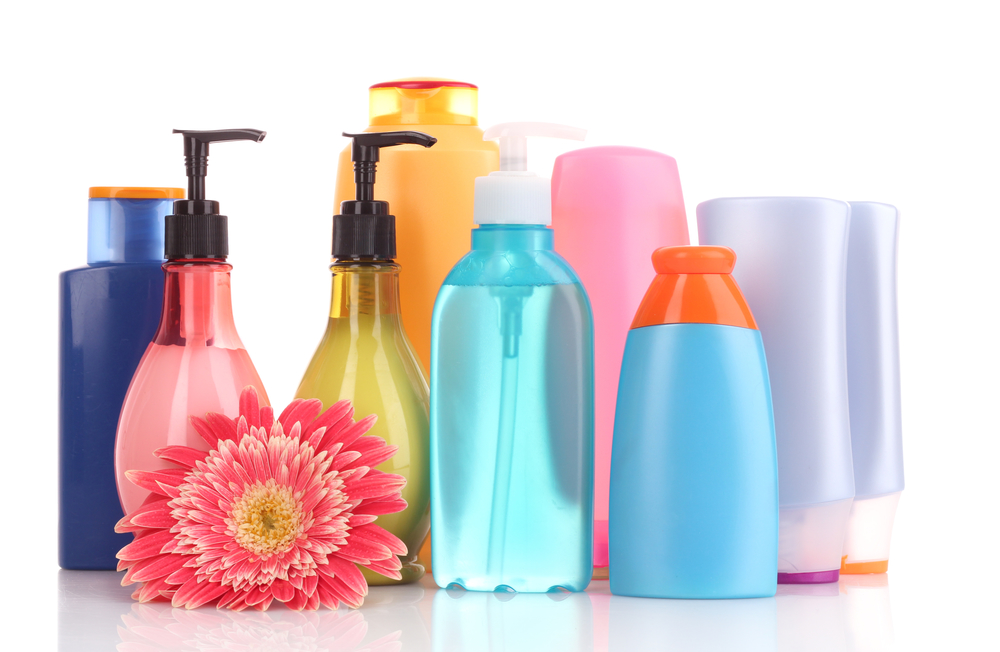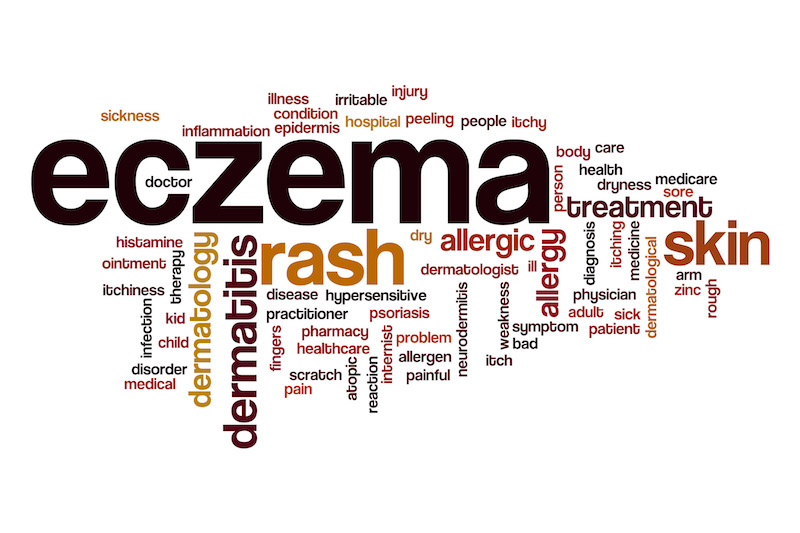Most soap-based cleansers have a high pH (above 7) [1] and can also be drying to our skin. Even the flow of shampoo and conditioner over the body after rinsing hair may be irritating. For those with eczema, use of these products can create the perfect environment for a flare up.
Enter: ‘pH neutral’ skin care products! Remember a few decades back when companies brought in ‘pH neutral’ products like moisturisers, shampoos and conditioners? This marketing spin claimed that this was better for our skin, because neutral couldn’t be irritating, right? In fact, neutral skin care products may be a trigger those with sensitive skin and conditions like eczema. This is because our skin’s pH isn’t actually neutral.
Our Skin is Acidic…
The normal pH of our skin is acidic and ranges between 4 and 6, varying across different areas of skin [2]. The acidic nature of our skin protects against pathogenic (bad) bacteria [3]. Skin pH is linked with skin function; a higher pH reduces normal skin function and can lead to inflammation and disruption of the skin barrier [2,4].
The marketing of these products created a myth that ‘neutral’ was healthy for our skin. Neutral and alkaline skin/personal care products increase the pH levels of our skin [4]. Even washing hands with soap has been shown to increase the pH of skin for at least 90 minutes [5] and after showering/bathing for up to 6 hours [3]. Sustained increases in pH can adversely affect skin integrity [6].
Our skin is covered with tiny microorganisms known as our skin microbiota. These microorganisms have important functions including protecting and maintaining our skin integrity. These beneficial microbes thrive in the acidic environment of our skin [3]; disrupting this by altering the pH affects their ability to survive on the skin. Balance and diversity of these microorganisms on our skin is important for good skin health. Reducing skin microbiota diversity and concentrations creates an environment where potentially pathogenic bacteria can thrive.
One of the potentially pathogenic bacteria implicated in eczema is Staphylococcus Aureus. It is ‘potentially’ bad because it is detected on the skin and up the noses of many who do not have eczema, yet does not cause an issue. Where skin is dry, broken, has a higher pH and/or an impaired immune response such as in those with eczema, this bacteria may cause problems. This is because it thrives in a dry and more alkaline environment [6]– one that can be created by use of soaps and other skin care products. This bacteria has the potential to thrive if the skin remains dry and alkaline. It has been measured in significantly higher concentrations in areas of flared up eczema skin [7].
Research has also shown that skin pH of kids with eczema is significantly higher than in children without eczema [8]. Furthermore, in the patches of skin with greater itch and dryness in kids with eczema, higher pH values have been measured [9, 10]. It is therefore an important but often neglected approach to eczema to regain and maintain an acidic environment to optimise skin integrity and the skin microbiota to help soothe eczema skin.
It isn’t just moisturisers…
Many different personal care and skin care products are used every day. Moisturisers, soaps, bubble baths, shampoo and conditioners, hair care products, makeup, toners, serums, fake tans, perfumes… the list truly goes on! These products may irritate the skin due to individual ingredients or the pH (or both). One study has shown a significant link between the level of skin irritation and the high alkalinity of a cleanser [11].
What can we do?
- Being proactive in our approach to personal care and skin care is a great start. Check the safety of the ingredients in each of the products we use on ourselves and our children.
- The Environmental Working Group has a free Skin Deep Database at EWG.org that contains safety data on these ingredients, if known/tested. Many people feel overwhelmed at this database. It’s okay! If you’re unsure where to start, then start with the moisturiser that you use most frequently. These are often applied all over the body and multiple times a day for those with eczema – ensure this is safe is a good place to start.
- Minimise or remove drying soaps, body washes and bubble baths, shampoos and conditioners. Avoid alkaline (or even neutral) skin care products. Water is usually enough in kids!
- Keep showering/bathing times short and limit frequency to 2-3 times per week (where appropriate!)
- Moisturise the skin regularly with a moisturiser that you trust
- Ananthapadmanabhan KP, Moore DJ, Subramanyan K, Misra M, Meyer F. Cleansing without compromise: the impact of cleansers on the skin barrier and the technology of mild cleansing. Dermatologic Therapy 2004; 17: 16–25.
- Ali SM and Yosipovitch G. Skin pH: from basic science to basic skin care. Acta Derm Venereol. 2013 May;93(3):261-7
- Lambers H, Piessens S, Bloem A, Pronk H, Finkel P. Natural skin surface pH is on average below 5, which is beneficial for its resident flora. Int J Cosmet Sci. 2006 28(5):359-70.
- Schmid-Wendtner MH1, Korting HC. The pH of the skin surface and its impact on the barrier function. Skin Pharmacol Physiol. 2006;19(6):296-302. Epub 2006 Jul 19.
- Rippke F, Schreiner V, Schwanitz HJ. The acidic milieu of the horny layer: New findings on the physiology and pathophysiology of skin pH. Am J Clin Dermatol 2002; 3: 261–272.
- Korting HC, Hubner K, Greiner K, Hamm G, BraunFalco O. Differences in the skin surface pH and bacterial microflora due to the long-term application of synthetic detergent preparations of pH 5.5 and pH 7.0. Results of a crossover trial in healthy volunteers. Acta Derm Venereol 1990; 70: 429–431
- Gong, J.Q., Lin, L., Lin, T., Hao, F., Zeng, F.Q., Bi, Z.G., Yi, D., and Zhao, B. Skin Colonization by Staphylococcus Aureus in Patients with Eczema and Atopic Dermatitis and Relevant Combined Topical Therapy: A Double-blind Multicentre Randomized Controlled Trial. British Journal of Dermatology. 2006: 680-687..
- Seidenari S, Giusti G. Objective assessment of the skin of children affected by atopic dermatitis: a Study of pH, capacitance and TEWL in eczematous and clinically uninvolved skin. Acta Derm Venereol 1995; 75: 429–433.
- Eberlein-König B, Schäfer T, Huss-Marp J, Darsow U, Möhrenschlager M, Herbert O, et al. Skin surface pH, stratum corneum hydration, trans-epidermal water loss and skin roughness related to atopic eczema and skin dryness in a population of primary school children. Acta Derm Venereol 2000; 80: 188–191.
- Sparavigna A, Setaro M, Gualandri V. Cutaneous pH in children affected by atopic dermatitis and in healthy children: a multicenter study. Skin Res Technol 1999; 5: 221–227.
- Baranda L, González-Amaro R, Torres-Alvarez B, Alvarez C, Ramírez V. Correlation between pH and irritant effect of cleansers marketed for dry skin. Int J Dermatol 2002; 41: 494–499
You may also like to read:









